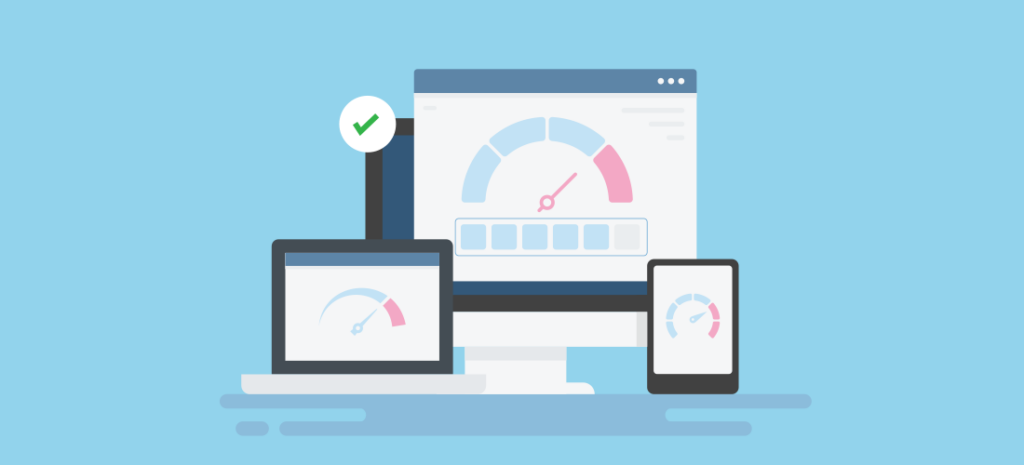
7 Tips to Make Your Website Load in Two Seconds or Less
More than a decade ago, Amazon noticed an intriguing trend. For every 100 milliseconds they sped up the load time on their website, revenue increased by one percent. Then, Google let it be known that website load time was a key metric for ranking higher in search engine results pages.
How Important is Website Load Time?
When it comes to website load times, speed matters. A load time of one second or less is ideal, and the entire experience must be quick and responsive in order to keep customers browsing and buying. Accordingly, it makes sense that web developers would do everything in their power to ensure that their site is nimble.
The problem can become even more pronounced for those who go online via a virtual private network (VPN) connection, which are inherently slower because of the. encryption/decrytion process.

With an increasing number of people using VPNs to protect their privacy and anonymity online, it’s even more critical for website owners to ensure that their websites are lightning fast. This means that anyone browsing with a VPN won’t experience such a significant slow down when visiting your site.
An Example of Speeding up Website Load Time
Understanding that page load time is a critical metric, many site owners are trying everything in their power to improve their site’s performance. There are literally hundreds of case studies that support the importance of faster websites with real world numbers. One is Edmunds.com, which managed to reduce page load time by seven seconds – which is huge. Pageviews increased by 7% and ad revenue went up by 3%. Those are not inconsequential numbers!
By using the tips below, the owner of this website was able to improve his load time to just 583 milliseconds. The number of HTTP requests that the homepage was making was cut in half and the page’s size was reduced to one-third of its original size. All of these improvements were achieved without impacting the visual experience for the user.
Here are a few ideas for how to improve website load time and your customer’s experience.
1. Use a Better Web Host

Cheap web hosts are everywhere, and when you’re just starting out and keeping expenses low, they seem like a pretty good option. However, the cheaper the web host, the more likely it is that your website is crowded onto a server with too many other sites. This means you get less bandwidth and slower load times.
Many web hosts can load your website in 600 to 1300 milliseconds. That’s pretty good, but there are hosts out there (such as managed WordPress hosts) that offer better performance. One of those is WP Engine, a managed WordPress host that delivers incredibly fast load time. This is superior performance no matter how you look at it. This can be one of the most significant ways that you can reduce the page load time on your website.
2. Take Advantage of a Content Delivery Network
Instead of storing all of the media for your website on just one server, using a Content Delivery Network, or CDN, houses complete site copies on several servers that are distributed around the world. The CDN makes the incredibly fast transfer of data possible by caching content at the edge of the network. CDNs also can handle a greater flow of traffic, so there should be fewer instances of hardware failure, and many webmasters find that their bandwidth costs are reduced once they start using a CDN. With a solid web host and a CDN, website load times can decrease dramatically.
3. Repair Broken Links
A broken link stresses your bandwidth, and no one who browses your website is likely to stay there for long if they encounter even one broken link. Tools such as Ahrefs, Screaming Frog SEO Spider, and Google Webmaster Tools can help find and fix any broken links that are causing problems. Once broken links are fixed, you’re bound to see an increase in traffic and notice that people are staying with your site for longer periods. Plus, your website load times are going to improve.
4. Use Static HTML Instead of PHP where Possible

Hypertext Preprocessor or PHP is a scripting language that’s useful for web development. The code in PHP is server executed, thereby generating HTML that goes out to the client. PHP can be an efficient solution that reduces the requirement to enter the same data over and over again. However, sticking with PHP means you’re using up valuable space on the server. When PHP isn’t saving you any time, switch to static HTML instead.
5. Optimize Images
Images can come with all sorts of colors, comments, and other data that add nothing to the effect. If you want to speed up your website load time, then it’s critical that you optimize images. A JPEG format is recommended. Tools like Smush.it or WP Smush.it take the hard work out of doing this.
6. Use Browser Caching
Website load times will improve if visitors don’t have to download every single element on the page on each visit. Browser caching makes it possible to maintain some data on the user’s computer so that their device doesn’t have to retrieve everything each time. Various plugins are available to enable browser caching.
7. Make JavaScript Files Minified
JavaScript can be seriously bloated and clunky, which has a direct effect on page load time. One way to minify JS is to squish all JavaScript files into just one file. Those using WordPress may want to use WP Super Minify to make the job easier.

Final Thoughts
Unless you’re unconcerned about whether your website visitors hang around and do something constructive or leave in a frustrated huff because everything takes too long, decreasing page load time is something you should be concerned about. The good news is you don’t have to be a techie to make serious progress in a short amount of time. Just follow the steps outlined above and good luck!












